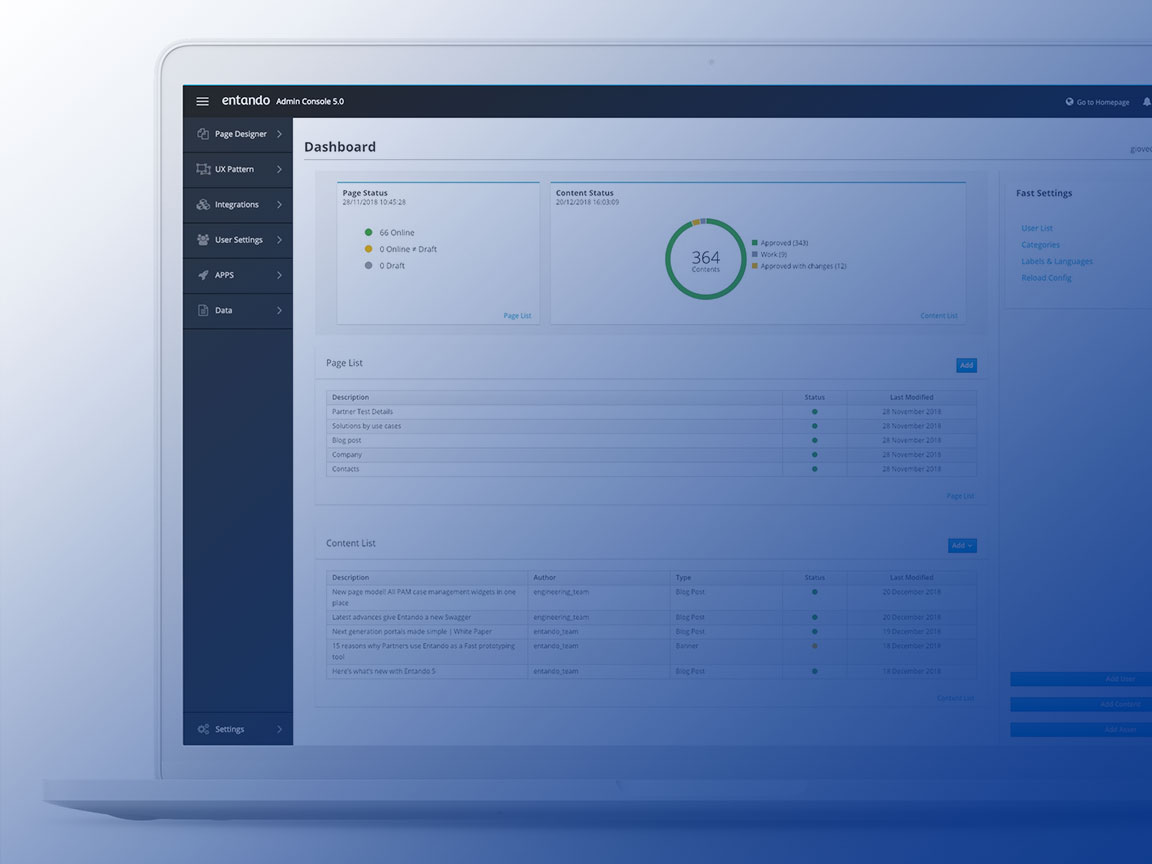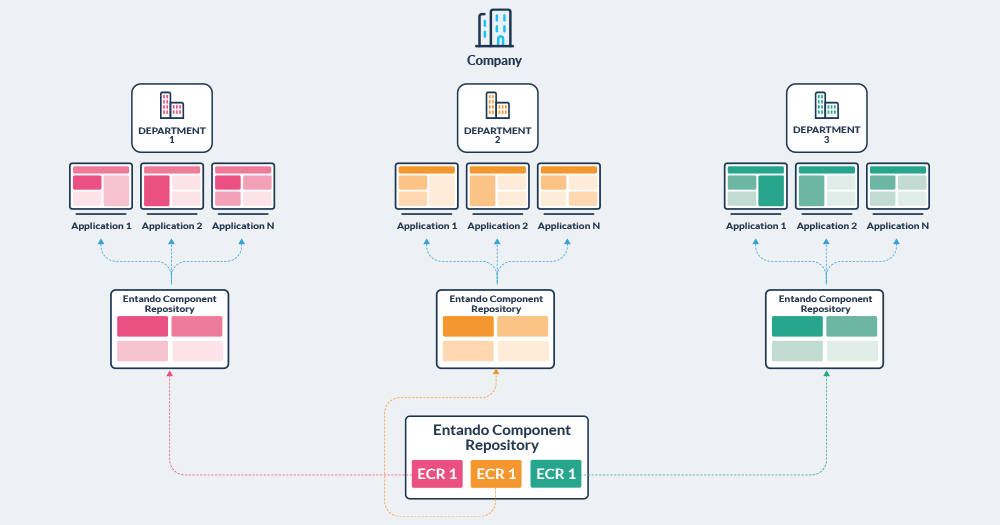
What is a Micro Frontend Platform?
Micro frontends offer a number of benefits to your organization, but they also introduce a new level of complexity. A micro frontend platform helps your business innovate quickly while managing increasing complexity. Here's how.
Micro frontends are a trend in enterprise software development that have really served as the logical evolution of microservices. While microservices decouple backend functionality, micro frontends have enabled truly cross-functional teams to organize around business outcomes from the database up to the UX layer.
The benefits of the micro frontends trend are more independence on development and design teams, as well as the increased overall ability of an organization to innovate quickly.
And while micro frontends offer many benefits to the enterprise and are an exciting innovation, they also introduce a new level of complexity into your development process. In order to overcome these challenges, both business and technical leaders need to think differently about how they organize their teams.
Thus, moving to a micro frontend architecture is as much an organizational decision as it is a technology choice.
What’s more is that new methodologies necessitate new tools. This is where large organizations can benefit from utilizing a micro frontend platform--particularly one that enables you to more easily navigate container orchestration on Kubernetes.
But what is a micro frontend platform for Kubernetes? Here’s a definition, as well as some of the key benefits of using one.
A micro frontend platform provides developers with tools to rapidly build, design, and assemble applications from micro frontends, microservices, and web content.
Here’s a diagram of what we mean by that, and how you might visualize a micro frontend platform.

On the bottom left of the image, you’ll notice that one of the tools a micro frontend platform provides is a component generator, which enables you to rapidly generate customized micro frontends and microservices. You can also do this via the command line.
These components are then made available to be installed in your application in a shared component repository. This enables you to reuse micro frontends across multiple projects, which will allow you to increase the rate of development in successive projects, as well as more easily build standardization into your development process.
A micro frontend platform also provides a UI interface to lay out and assemble your micro frontends into an application, portal, or website. You can pull micro frontends and microservices from the component repository, deploy them to your server cluster, and then have them wired together by the cluster infrastructure.
The ability to wire micro frontends and microservices deployed in containers together is one of the key elements that a micro frontend platform provides, the main benefit being that it simplifies the life of the enterprise on Kubernetes.
The next step before the application is displayed to the end user is the compositing layer, where micro frontends are dynamically assembled together.
A micro frontend platform also comes with a web content management system so you can create web content in your application along with your micro frontends. Having a WCMS enables the non-technical members of your organization to have control over the content for your site, app, or portal without needing help from your developers.
Build vs. Buy (Or Download)
While it’s certainly true that you can develop in micro frontends without a micro frontend platform, you’ll need to weigh the costs of creating your own framework, as opposed to leveraging a pre-existing platform.
You maintain complete control over your architecture by building everything yourself, but by leveraging a micro frontend platform, you can get to market much more quickly--which is why you wanted to build in micro frontends in the first place.
For example, if you build your own framework, you’ll be able to compose micro frontends into a single application by leveraging iframes, custom routes, or custom elements. But that architecture doesn’t come with out of the box support for web content management. And it can be painful to not have basic web content management features when you want to create a page or add web content alongside your app.
Built-in web content management also prevents bottlenecks and conflicts between marketing and development teams so each team can focus on delivering their primary roles and responsibilities.
Furthermore, having a component repository will help you leverage reusability. For example, let’s say that 10 percent of a team's development is reusable across the company. This can include standard UX designs or UI components for consistent user experience, common frontend elements or services, as well as integrations with different data sources.

For each subsequent project, the ability to reuse micro components that have already been developed means time savings, lower cost, and faster time to market. And the benefits begin to compound the more applications you build using the platform and its repository.
With a micro frontend platform, your teams are able to shift effort away from writing boilerplate code or duplicating effort in developing the same or similar UX/UI components across different projects, focusing more time rather on creating new ideas and solving new problems.
These challenges certainly aren’t insurmountable without a platform. However, you must weigh whether they are worth the time and effort of continuing to manage them manually rather than through a micro frontend platform.
Begin developing with the leading micro frontend platform for building enterprise web apps on Kubernetes.
When release cycles take months instead of weeks, your business is left unable to deliver modern online experiences. Development bottlenecks slow your ability to make application updates, keeping you from iterating and innovating. And outdated or clunky UX keeps you from winning customers over and retaining them.
So that’s why we created a platform to help you get your ideas to market faster.
Entando is the leading micro frontend platform for building enterprise web apps on Kubernetes. We want to change the way enterprises think about building their apps, sites, and portals in order to innovate more quickly.
With Entando, you can leverage customized blueprints to quickly create micro frontends and assemble them onto a single page. Then reuse UI/UX components across multiple projects via the Entando Component Repository, saving money and increasing development speed. Scale quickly and effectively with Entando’s custom Kubernetes operator, automating the deployment of scalable, self-healing applications.
Entando is open source with available enterprise support. Begin developing on the platform today, and get a quote to see how our Professional Services team can help your enterprise build better apps, sites, and portals--faster.
